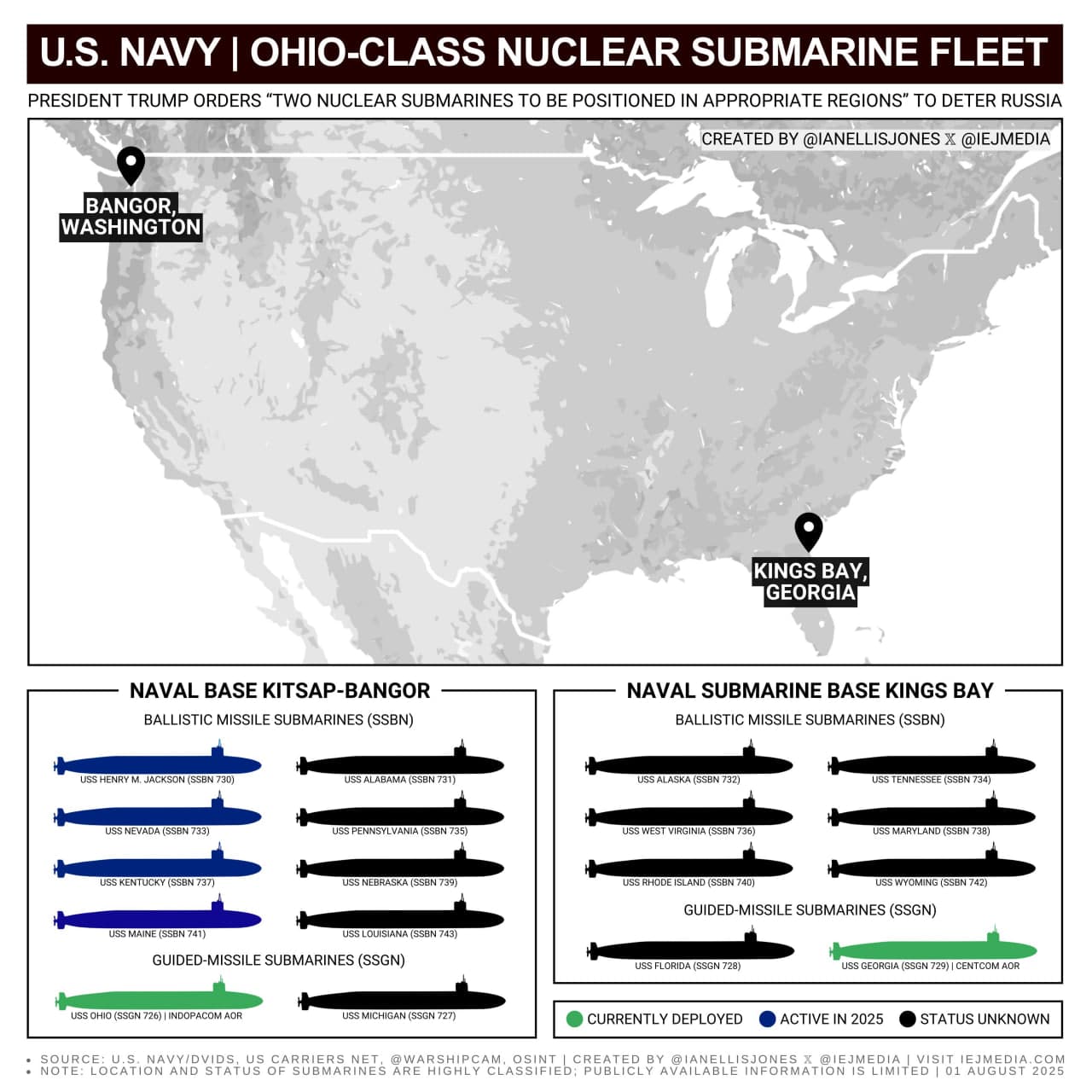POTUS Orders Repositioning of Two Nuclear Subs Amid Rising Russian Threats
In a significant military maneuver reflecting escalating tensions with Russia, President of the United States (POTUS) has ordered the repositioning of two nuclear submarines. This decisive action comes as part of a broader strategy to ensure national security amid increasing threats from Moscow, particularly in light of recent aggressive posturing and rhetoric from Russian officials.
Background & Context
The U.S. Navy"s submarine fleet is a critical component of its nuclear triad, designed to deter potential adversaries through the threat of overwhelming retaliatory force. The fleet includes 14 Ohio-class ballistic missile submarines (SSBNs), which are considered the most survivable leg of the triad, alongside strategic bombers and intercontinental ballistic missiles (ICBMs). These submarines are equipped with advanced stealth technology and can launch nuclear missiles from underwater, making them a formidable deterrent against any nuclear threat.
The backdrop for this repositioning order includes a series of alarming developments from Russia, particularly statements from high-ranking officials, including Dmitry Medvedev, who have issued stark warnings about nuclear preparedness. As previously reported, these developments have raised concerns within the international community regarding Russia"s willingness to escalate its military posture. The decision to reposition U.S. subs is thus not only a tactical move but also a signal of resolve to allies and adversaries alike.
Key Developments
President Biden"s directive to reposition the submarines was announced during a press briefing at the White House, where he emphasized the importance of maintaining a strong deterrent capability in light of the "growing threats from Russia." While specific details about the submarines" new locations remain classified, officials indicated that they would be positioned in areas strategically important for monitoring Russian naval activities.
Military experts suggest that this repositioning is a response to Russia"s recent military exercises in the Black Sea and its ongoing military buildup along the borders of Ukraine. The U.S. Navy"s ability to project power and monitor adversaries from underwater is crucial in these tense scenarios. This move also aligns with the Pentagon"s broader strategy of enhancing deterrence and readiness in Eastern Europe, as NATO allies express increasing concern over Russian aggression.
Broader Impact
The repositioning of these submarines could have far-reaching implications not just for U.S.-Russia relations but also for NATO"s collective security posture. Analysts argue that this move reinforces the commitment of the U.S. to its allies in Europe, particularly those in Eastern Europe who feel threatened by Russia"s military ambitions. Such actions may also influence other nations" military strategies, potentially leading to a renewed arms race or increased military spending among NATO allies.
Furthermore, public sentiment in the U.S. regarding military readiness and nuclear deterrence has been shaped by these developments. As seen in recent developments, discussions around nuclear preparedness are becoming more prominent, reflecting a heightened awareness of global security challenges. Experts warn that this situation could escalate if diplomatic efforts do not yield results, potentially leading to a more volatile security environment.
What"s Next
Moving forward, the focus will likely shift to diplomatic channels as the U.S. seeks to de-escalate tensions while maintaining a robust military presence. The Biden administration is expected to engage with NATO allies to discuss collective defense strategies and coordinate responses to any further Russian provocations. Additionally, the U.S. will continue to monitor the situation closely, ready to adapt its military posture as necessary.
As the world watches these developments unfold, the implications of this repositioning order will be scrutinized. Analysts will be keen to assess how Russia responds, particularly in light of its recent military exercises and statements from its leadership. The international community will be looking for signs of whether this action will lead to a more stable security environment or if it will exacerbate existing tensions.






![[Video] Vladimir Putin delivers speech in military uniform](/_next/image?url=%2Fapi%2Fimage%2Fthumbnails%2Fthumbnail-1764621642413-vh08a-thumbnail.jpg&w=3840&q=75)
